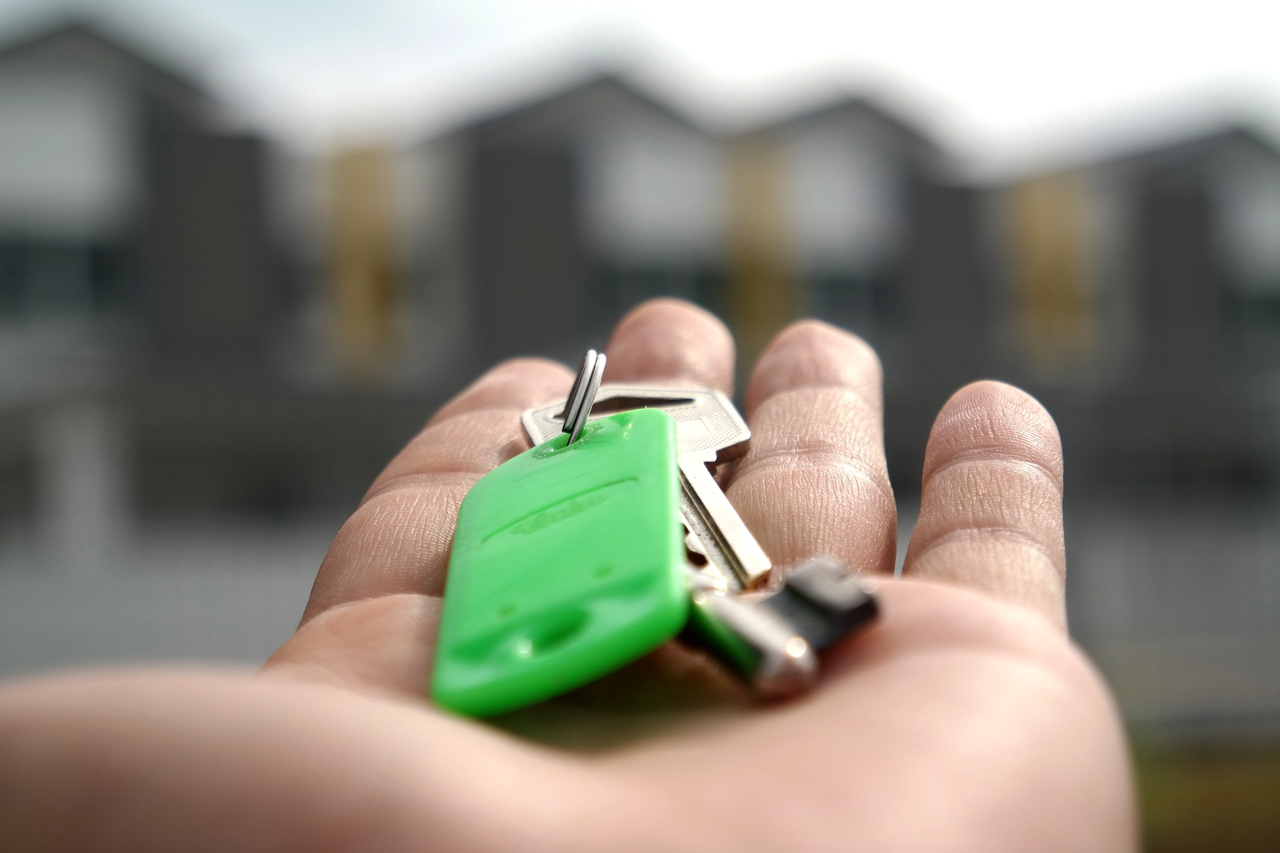Self-directed investing is a great way to take control of your freedom and invest in assets you trust.
While there are many different assets to explore, real estate remains one of the most popular options.
Between its high-growth potential and steady earnings, purchasing real estate with an IRA could be your early ticket to retirement.
Understanding the benefits and potential drawbacks of using your SDIRA to invest in real estate is an important part of developing your investment strategy.
Is investing in real estate the right fit for your portfolio and long-term retirement plans? Discover if this powerful investment tool aligns with your financial goals.

How to Invest in Real Estate Using an IRA
Unfortunately, most retirement plans restrict your ability to purchase real estate, aside from REITs and stocks.
However, a self-directed IRA enables investors to tap into alternative assets, like real estate, with some exceptions.
Property purchased with an IRA can only be used for investment purposes and cannot be used to house you or your family. Additionally, you need to hire a professional to work on your property, as you can not make any modifications yourself.
Once you’ve opened your SDIRA, you will need to fund it with cash. Most SDIRA real estate investments require a cash purchase, so you must put in enough money to buy your target property.
After you purchase the property, you’ll need to file the necessary paperwork through your custodian, and your properties will show up in your SDIRA account.
What Types of Real Estate Can I Hold in a Self-Directed IRA?
SDIRAs can be used to purchase virtually any type of real estate, including:
- Vacant land
- Single-family properties
- Multi-family properties
- Commercial properties
- Real estate development companies
Again, it’s important to note that these properties are used for investment purposes only.
As for tax purposes, your custodian will need to file Form 5498 yearly to report your investment properties’ fair market value (FMV). For this reason, it’s important to choose a self-directed IRA custodian you trust.
With this information in mind, let’s explore 10 pros and cons of investing in real estate with an SDIRA.
10 Pros and Cons of SDIRA Real Estate Investing
1. Pro – Tax-Free or Tax-Deferred Account Growth
There are several tax advantages of investing in real estate through your SDIRA. For example, tax-deferred or even tax-exempt investments allow you to keep more of your money in your pocket. In addition to taking advantage of the 1031 exchange loophole, you can also liquidate your investment in the future tax-free if you have a Roth IRA structure for your SDIRA.
2. Con – Unrelated Debt-Financed Income
UDFI can occur when any property held produces income. As a result, any gains from that property may be indebted at any time during the tax year, creating an additional tax burden. However, this only occurs in certain cases.
For example, if you use a loan to purchase property for your SDIRA, the income for your property would be subject to UDFI. Unfortunately, if you don’t have the money upfront, you may have to deal with penalties that eat away at profits.
3. Pro – Control Over Your Property Choices
Having greater control over your investments is the primary reason for choosing an SDIRA. Determining the types of properties you want to invest in gives you complete control over your retirement funds and opens up higher growth potential for your account.
4. Con – Fluctuating Market
The real estate market can be particularly volatile, especially as interest rates fluctuate. Many external factors impact local real estate markets, so you will need to be prepared to endure some bad times.
However, real estate markets always present opportunities for investors–if you know where to look. Major metros like Denver or Salt Lake City may be expensive, but others like Lincoln, Nebraska, offer great buy-low opportunities in a hot market.
5. Pro-Protected Investments
Self-directed IRAs are protected from creditors, which is great news if you experience any financial setbacks. While bankruptcy is never desirable, there are times when bankruptcy protection can protect you. Thankfully, should that happen to you, you can rest assured knowing your SDIRA investments are protected.
6. Con – Pricey Investment
It is not surprising that purchasing real estate is expensive. Even if you purchase property at a low point, it will still put a dent in your wallet. Including the costs of all the closing fees, upgrades, taxes, and upkeep, real estate could get very pricey.
7. Pro – High Return on Investment
Nevertheless, high risk creates high rewards. More than 90% of the world’s millionaires have real estate somewhere in their portfolio. This is primarily because real estate provides such high returns on investment. While the initial cost of investing in real estate is high, the potential returns are even higher, which makes it a desirable investment vehicle.
8. Con – Third Party Involvement
To take advantage of the SDIRA benefits, the IRS requires the involvement of a certified IRA custodian to hold the account. As a result, any investments must be approved by your custodian–including the release of funds.
The custodian is also responsible for tracking your account transactions to report to the IRS. Unfortunately, this may slow down your turnaround when you need to have cash at your fingertips.
Getting “checkbook” control with an LLC account is possible, but you still need to report your transactions to a custodian. Fortunately, Horizon Trust works with its customers to ensure they meet proper regulatory compliance while giving them control over their investment decisions.
9. Pro – Opening an LLC
By opening an SDIRA LLC, you can gain checkbook control and skip the middleman! Transactions won’t wait on administrators; you can purchase whatever you need using your IRA fund.
As a real estate investor, you may have to act fast on a purchase or be able to have access to your funds quickly. Thankfully, having a checkbook LLC gives you that freedom and flexibility you need to act fast.
10. Con – Restrictions and Possible Disqualification
Taking control of your investments requires great responsibility. Not only do you need to do your due diligence on any properties you invest in, but you will also need to make sure that you’re educated about requirements set forth by state and federal government entities.
For example, you cannot dwell in any property you own or make improvements with your own hands. Knowing how to navigate the requirements while also making informed investment decisions can be a major undertaking.
3 Ways to Use Your SDIRA to Invest in Real Estate
If you decide that investing in real estate with your self-directed IRA is a wise investment decision, then you need to pick an investment decision that is right for you. Here are a few strategies to purchase real estate in an IRA
Direct Purchase: Going Alone or With A Partner
Assuming sufficient funds, you and a partner can buy and own an investment property under an SDIRA, with the title in your IRA account. All rental income channels through the account, compounding returns over time. Just be aware that there are disqualified persons whom you will be unable to partner with. For example, spouses or familial descendants who will benefit financially from the sale or maintenance of a property will be forbidden by law. Brush yourself up on rules surrounding prohibited transactions to stay prepared.
Leveraging Property with an IRA
If you want to avoid using your own direct funds or a partnership, another way to fund your property purchase is by leveraging your account. This method allows you to use borrowed money through your IRA with a non-recourse loan. The property is then owned by your account exclusively, and all personal assets are protected against seizure if you fail to repay your loan.
Non-recourse loans will come with steeper interest rates and possible exposure to UDIT (unrelated debt income tax.) While leveraging isn’t the only way to run into this tax issue, borrowing money outside the IRA carries a penalty. The additional taxes applied are something to consider when investing. As your leverage loan decreases, so does your UDIT. The more you have to put down on your investment, the better.
Ownership in a Limited Liability Company (LLC)
Using an LLC to purchase ownership of a property could be beneficial, depending on your position. You essentially “own” your own company when you form a limited liability company. Your SDIRA, in turn, holds interest in the LLC or trust. If you own many different properties, such as an office building or a few vacation homes, an LLC provides further tax advantages while reducing the liability with individuals. It also provides asset protection in individual cases involving the property as the title is owned by the LLC itself.
Another advantage of self-directed IRAs within an LLC is checkbook control, which gives you greater autonomy over your investments. With checkbook control, you have quicker access to IRA funds, potentially reducing custodial fees, and greater flexibility in investment decisions.
To add, since all investment transactions run through your LLC, it offers enhanced privacy as they’re not routed through your custodian.
Rules for Investing in Self-Directed IRA Real Estate
Here are several rules to be mindful of when investing in self-directed IRA real estate:
- Prohibited Transactions. Private transactions, such as using IRA funds to purchase real estate for personal use or working alongside disqualified persons (e.g., family members), can jeopardize your SDIRA’s tax advantages.
- Funding. Only funds within your SDIRA can be used for real estate investments. Any use of personal funds outside of your SDIRA or bank loans is not allowed.
- Disqualified Persons. Expect stringent rules regarding transactions involving disqualified persons. Examples of disqualified persons include the IRA holder, spouses, children, and individuals acting as fiduciaries.
Takeaways
Investing in real estate using an SDIRA requires patience, careful planning, and the funds to secure your assets.
After considering the pros and cons, only you can decide if real estate is the right asset for your portfolio. Before making investment decisions, contact the financial experts at Horizon Trust to help you set up a real estate IRA and evaluate your investments.
FAQs: Self-Directed IRA Real Estate
Can I use my self-directed IRA to purchase property for personal use?
No, you cannot use your self-directed IRA to purchase property for personal use. The IRS prohibits self-dealing transactions, which include using IRA funds to benefit yourself or disqualified persons, such as family members.
Can I partner with others on real estate investments in my self-directed IRA?
Yes, you can partner with others on real estate investments within your self-directed IRA. However, it’s crucial to structure the partnership correctly to comply with IRS rules and regulations. Each partner’s share of the investment should be proportional to their contributions, and all income and expenses should be allocated accordingly.
Are there any fees associated with managing a self-directed IRA for real estate investments?
Yes, there are typically fees associated with managing a self-directed IRA for real estate investments. These fees may include account establishment fees, annual maintenance fees, transaction fees for buying and selling properties, and any additional fees charged by the custodian or trustee.
What happens to the rental income from properties held in a self-directed IRA?
Rental income generated from properties held in a self-directed IRA is deposited directly into the IRA account. This income can be reinvested into additional real estate properties or other investment options within the IRA. It’s essential to consult with your IRA custodian or tax advisor to understand how rental income affects your specific IRA.
What happens to my self-directed IRA real estate investments when I retire?
When you retire, you can start taking distributions from your self-directed IRA, including any real estate investments held within the account. You have the option to sell the properties and take distributions in cash or continue to receive rental income from the properties as part of your retirement income strategy. It’s essential to plan your retirement withdrawals carefully to minimize tax implications and ensure a comfortable retirement lifestyle.
What types of real estate properties can I invest in for house flipping with a Self-Directed IRA?
With an SDIRA, investors can take advantage of various real estate properties, including single-family homes, condominiums, townhomes, multi-unit properties, fixer-uppers, and even distressed properties like foreclosures. Among these options, fixer-uppers stand out as a favorite due to the potential for value-boosting renovations that lead to substantial profits upon sale.
Are there any penalties or fees associated with house flipping within a Self-Directed IRA?
Yes, various penalties and fees are associated with house flipping within an SDIRA. Examples include penalties for prohibited transactions, unrelated business income tax, early withdrawal penalties, excess contributions, and non-recourse loan fees.
In addition to these, you’ll also incur the standard administrative fees charged by the custodian or administrator of your account. Legal and professional fees might come into play in complex investment situations, necessitating expert-level guidance to navigate.
Greg Herlean
Greg has personally managed over $1.4 billion in financial transactions via real estate investing and fixed and flipped over 450 homes and 2000 apartment units.
His aptitude for business has helped him to provide management direction, capital restructuring, investment research analysis, business projection analysis, and capital acquisition services.
However, these days he is mainly focused on being a professional influencer and educating investors about the benefits of using self-directed IRAs for tax-free wealth management. He is also a devout family man who enjoys spending his free time with his wife and children.
Greg Herlean’s journey started at 19 years old when he made a 2-year journey to Guayaquil, Ecuador, and volunteered to help less fortunate families. As a result, he learned many foundational lessons about faith, community, and hard work, which have helped him in his business success. Using these lessons, he was able to slowly build his wealth through real estate investing and establish Horizon Trust in 2011.



